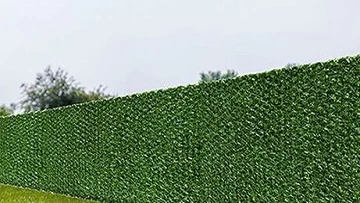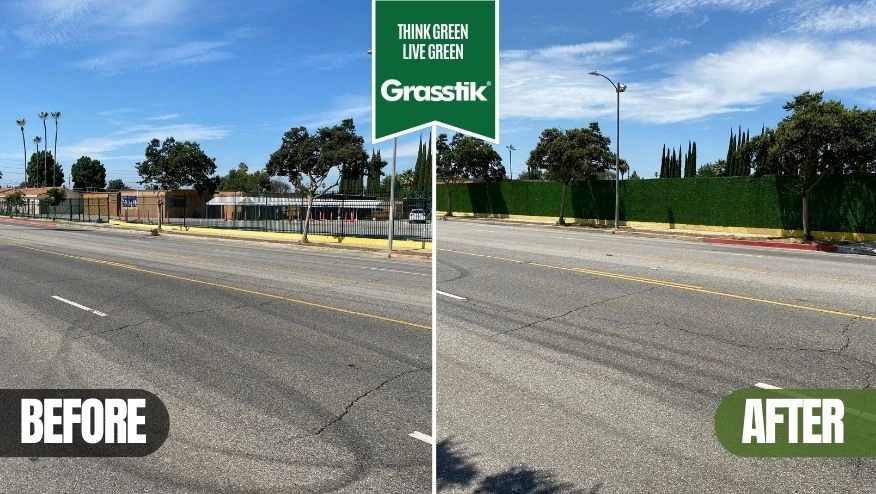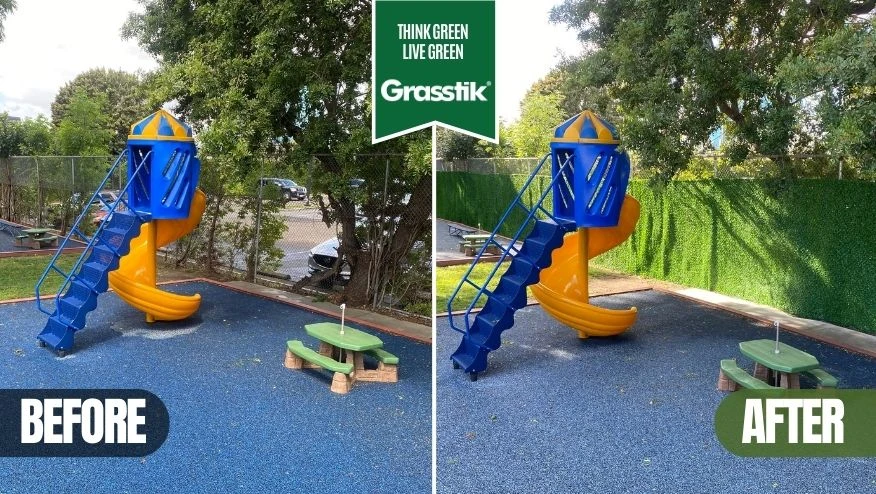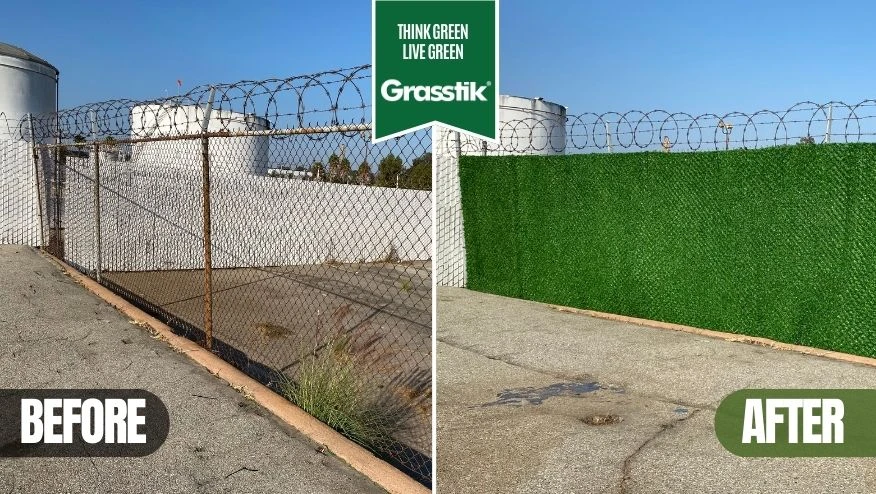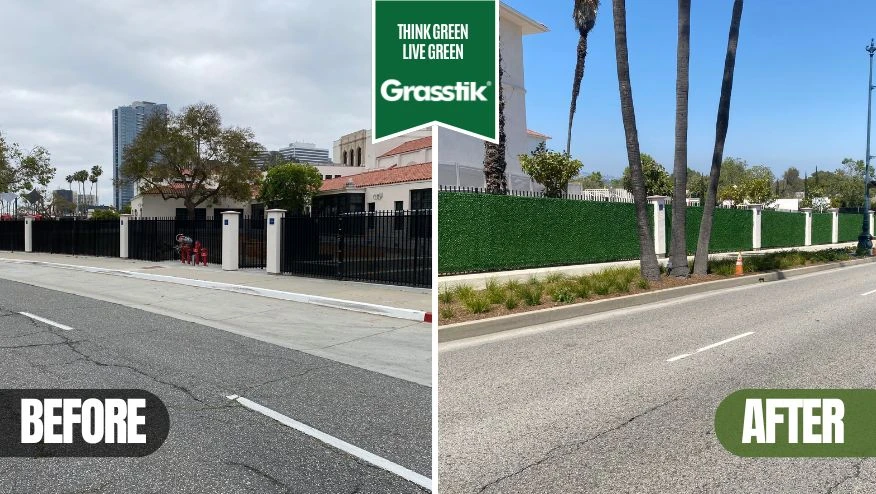
A well-kept fence line is crucial for property maintenance, including cutting grass along the fence to prevent encroachment and enhance curb appeal. Many homeowners struggle with overgrown grass, weeds, and pests in these areas.
In this tutorial, we'll address common issues with fence-line grass and offer expert-approved solutions to help you transform an overgrown area into a neatly maintained space.
How to Cut Grass Along a Fence
Achieving a clean, sharp line between your lawn and fence requires careful techniques for cutting grass near the fence. Precise pruning is essential for maintaining a manicured look along the fence line. If you're wondering how to cut grass near a fence, here are some effective techniques for mastering fence-line grass management:
What Equipment is Needed to Cut Grass Along a Fence?
The String Trimmer:
Stands out among the rest as the classic tool for cutting grass near the fence. It has excellent maneuverability, notably when entering tight corners or passing through obstacles. And to get the best results, go for a trimmer that has the characteristic of an adjustable head angle to help you achieve precision cutting.
Best for: Most types of fences, particularly those with intricate designs or irregularly shaped fences.
Benefits: It is very versatile, easy to use, and can handle several kinds of terrain.
The Edger:
This equipment helps make clean, sharp lines when cutting grass next to fence. It cuts huge amounts of grass with precision and leaves it manicured. Electric or gas-powered models should be considered according to the size of the yard and personal preference.
Ideal for: keeping up and making a clear demarcation between the lawn and the fence.
Benefits: It offers precise cuts that last longer and give a clean appeal to the view.
Lawn Mower Attachments:
While these are not the primary tools for fence lines, some lawn mower attachments will help out. Consider the following:
- Mulching Blades: These are blades that chop grass clippings into fine pieces for less frequent bagging and lawn nourishment.
- Striped Rollers: Give your lawn beautiful stripes like a professional for the best sight of your fence line.
Tool Selection Based on Fence Type:
The right tool for your fence line is determined by the type of your fence.
- Wooden fences A string trimmer will allow for flexibility around posts and rails.
- Vinyl or chain-link fences An edger helps create a clean, sharp line at the bottom of the fence.
- Stone or brick walls Both a string trimmer and edger may be needed due to changes in land contours and other obstructions.
- Artificial Grass Fences: A soft-bristled brush or leaf blower can be used to remove debris and maintain the fence's appearance.
“Note: Always put safety first when operating any power tools. Protect your eyes with goggles or safety glasses, and wear gloves and closed shoes.”
What are the Steps to Cutting Grass Along a Fence?
Preparation:
- Clear the area. Be sure to clear the fence line of limb debris or rocks. This does not allow your equipment to get damaged, and it gives you a clear cut.
- Assess the landscape. Pay attention to the height of the fence and the type of grass growing next to it.
Trimming Techniques:
- Begin with the string trimmer. Use the string trimmer to knock down tall grass and/or weeds.
- Edge for perfection. Using an edger after trimming will show a clean, sharp line from lawn to fence.
- Finish up with a lawn mower. Low cutting height for grass with more than average height.
What are the Techniques for Cutting Grass Under a Fence?
When it comes to cutting under the fence, or as many wonder—how to cut grass close to fence—selecting the right technique is crucial for maintaining a neat and well-groomed lawn.
Manual methods:
Grass shears are simple manual tools ideal for cutting grass along fence and trimming underneath. They offer the user more control and adequate precision, thereby reducing injuries by 30%, according to the American Society for Horticultural Science, compared to the injury rates of other powered tools.
Sickles: These are ideal for larger areas. However, they are a bit challenging to utilize, and one requires some skill.
Powered Tools:
How to cut grass under fence ? String trimmers are excellent for this task. To ensure safety and efficiency, it's important to use proper protective gear and follow correct techniques.
A robotic mower is hands-free, works around obstacles like fences, cut grass along fence, and leaves a lawn looking even.
How to Prevent Grass Growth at a Fence Line?
Natural Deterrents: How to keep grass from growing on the fence line using natural methods is quite effective. These include mulching, landscaping, or plant barriers.
Mulching: The mulch smothers the grass and brings out a change in soil health. It is deduced from the research conducted by the University of Florida that mulching can drop the rate of grass growth by 60%. Thus, it proves to be a very effective natural deterrent.
Landscaping: Add ground covers or shrubs that will block the grass from encroachment if they are planted strategically.
Plant Barriers: Ground covers like clover create a natural barrier to weeds and grass.
What to Spray on a Fence Line to Kill Grass
If you're wondering how to keep grass from growing under a fence, there are several solutions available.
There are two types of herbicides: selective, against particular plants, and non-selective, killing all kinds of vegetation. On the other hand, selective herbicides will help in the case when one has to deal with unwanted grass under the fences without causing any damage to the nearby plants, while non-selective herbicides are better for the complete removal of vegetation.
Safety in Herbicide Use: The Protection Agency says improper use can be dangerous to the environment and hazardous to health. These herbicides are very effective it is possible to clear out 95% of unwanted vegetation. However, there are downsides to these, such as destroying beneficial plants and affecting the fertility of the soil. When considering what to spray on a fence line to kill grass, it's wise to check online reviews or consult with store staff for recommendations to avoid any potential issues.
Directed Spraying: For effective application, spray herbicides directly along the fence lines during calm or still windy days to avoid drift. It allows the use of a shielded sprayer, which protects plants nearby and does spot treatments of smaller areas with weeds. This will very highly reduce chemical use and the related environmental impact; therefore, it is a more controlled weed management approach.

